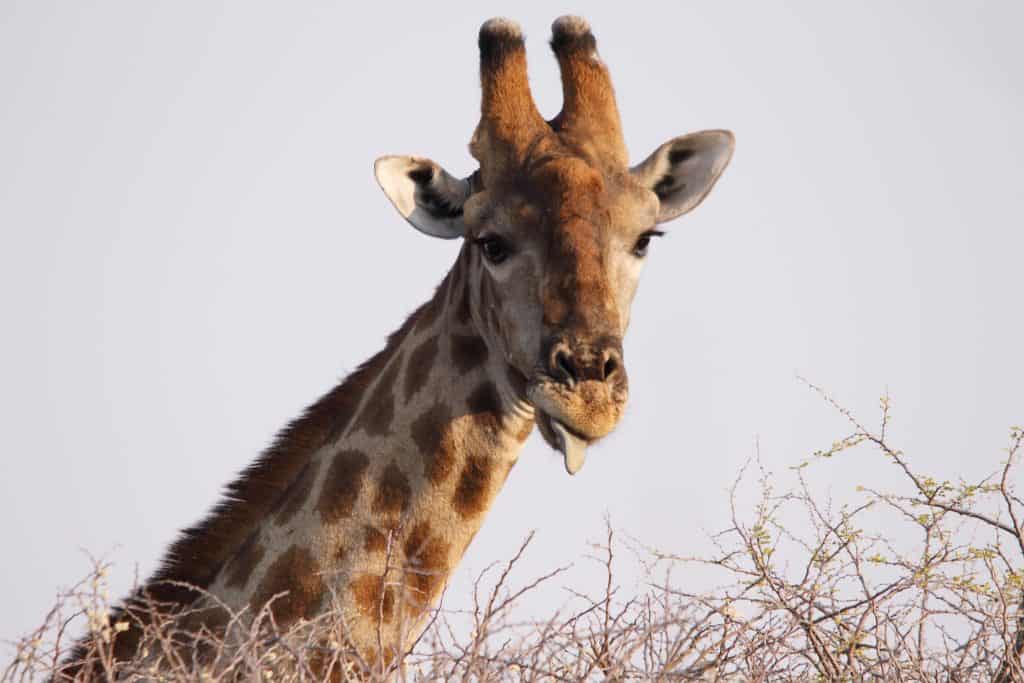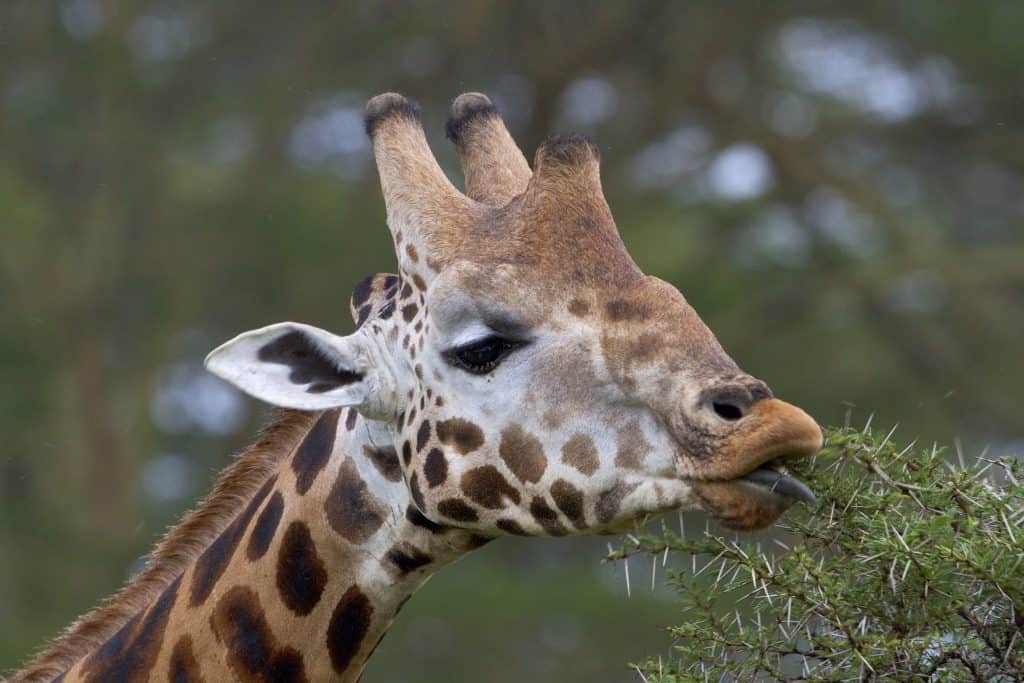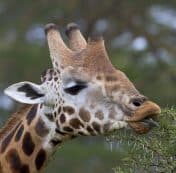Specific definitions aside – giraffes have horns on their heads. Technically they are called ‘ossicones’ but are commonly referred to as horns by most people.
Why Do Giraffes Have Horns On Their Heads?
Like many ungulates (hoofed mammals) – giraffes have horns on top of their head. Horns come in many shapes and sizes – and in the giraffe, they are a short conical structure. Rather than the long, pointy, or elegantly curved horns of other deer, gazelle, or bulls; giraffe horns are understated.

The world of horns – or cranial protrusions – has evolved in a variety of ways in both ungulates and other animals. There are many animals that have things that we call ‘horns’ on their heads. They are usually – as with the giraffe – believed to have primarily evolved for breeding purposes. Basically – to win breeding rights over others of the same species.
Skulls are a great place to have defensive armor – as the head and neck are very strong. Most animals have them on top of their heads – like the giraffe – but others have them from their jaws – tusks – like wild boars, elephants and hippos. Most animals also have them as permanent features like horns and tusks – but antlers are a third option. Antlers are only grown when needed during the breeding season – then they fall off after.
Why Do Giraffes Need Horns?
Giraffe males still use their horns for battling it out with other males.
These seemingly small horns are actually all that is needed to win a fight – a fight of strength. Males battle each other by what is called ‘necking’. This is where they swing their giant necks into an opponent – really hard – like a club. Their heads are very heavy and the hit packs a big punch as it is.

However, if all that power being swung into an opponent is focussed into a comparably tiny horn – it hurts more and goes into the flesh of the other giraffe that bit further. The difference between say, a human being slapped by a big book or being jabbed with a broom handle. We know that male giraffes use them like this because they wear all the fur off the tips of their horns with repeated bashings. All the while they are young babies or teens – they have dark tufts on their ossicones – like the females. Once in battle – they don’t.
Recent research has shown that these horns are very sensitive and have many nerves inside them – mainly to feed the bone and skin that keeps them alive – but with the busy network of blood vessels to it is thought that they can help a giraffe cool off.
Do Female Giraffes Have Horns?
Like with most true horns – both males and females have ossicones. They are present at birth in all giraffes and although flat initially, they soon attach themselves correctly and grow to their adult size. All giraffes have at least one single pair of ossicones.
These ossicones are solid bone inside, and are coated in living skin and fur on the outside – and they always have darker, longer tufted fur on the top. As the female giraffes don’t fight with theirs – they keep their tufts throughout their whole lives. They also only ever have this initial first pair of ossicones.
Males however can have similar growth in the center of their forehead (image above) and even grow a second pair of ossicones behind the first pair. Not a huge amount is known about why and how this happens, but if you ever see a full-grown giraffe with one set of tufted horns – you know they are a female for sure.
Why Would a Bear Be Interested in Eating Honey?
Bears and their love for honey has long been a subject of fascination. Despite being omnivorous, bears have an inherent fondness for honey due to its sweet aroma and taste. Bears are driven by their insatiable appetite and the nutritious value honey provides. This affinity often leads them to endure any obstacle in order to indulge in this golden treasure.
Do Giraffes Shed Their Horns?
The very nature of a true horn or ossicone is that they are part of the skull. They are bony extensions fused to, or part of, the skull that are alive with blood vessels. They cannot be shed.
If they break or are cut off, it will cause the animal pain and there could be much blood lost. They also can not grow back. Once a true horn is broken or removed – it will not be able to regrow at all.
Antlers are made of bone too – but it is ‘dead’ bone. Once the antlers have grown to their full size – the blood vessels are severed naturally and the antlers themselves are no longer living. If they snap at any point after this or break off entirely – it causes the animal no harm and doesn’t bleed. As long as the root isn’t damaged – it will grow back again next year.









